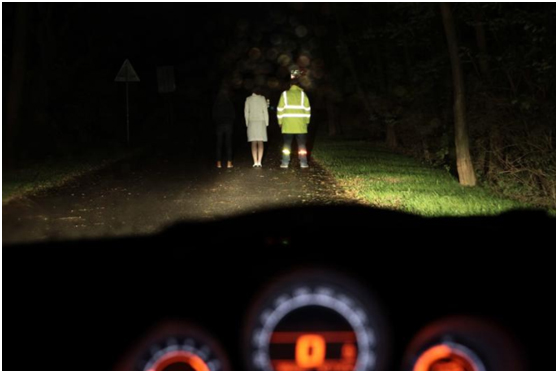Scientists from the Brno University of Technology have developed a unique methodology for night driving. It was created based on research that looked at the reactions of drivers to pedestrians in the dark in real traffic. Driving at night is the most difficult for beginners, yet driving school textbooks do not.
What influences the visibility of pedestrians at night and how fast is the driver’s reaction? Researchers from the Institute of Forensic Engineering investigated answers directly in the field between the municipalities of Lednice and Břeclav.
They involved four helmets and more than two dozen drivers. They used special glasses with recording cameras for research. “The first camera rotates with the driver’s head, which means that it senses where the driver is looking, and the second camera captures the driver’s eye. They measure the direction of the viewpoint,” said the head of research at the Institute of Forensic Engineering of BUT.
By comparing the two records, the scientists concluded that while a man dressed in white would be seen by a driver with low beams turned on for nearly eighty meters, pedestrians in black only for thirty. In the first case, the driver has four seconds to react, but in the second he has only a second and a half.
Some reflective material elements may not be seen by drivers
Although the law requires pedestrians to wear reflective elements outside the village, it does not say exactly what and how. Some reflective tapes, for example on the shoulder, may not be sufficient, according to experiments by the Institute of Forensic Engineering. “It is important that the pedestrian use more reflective elements and some on the lower body,” said Robert Aldus. Research also found that a muddy car is harder to see at night than during the daytime, and pointed out the danger of a nightly collision with wildlife.
Based on these results, the researchers developed two methodologies. One is used by forensic experts to deal with traffic accidents, and the other – Driving in Visibility Reduced by Darkness – can be used by driving instructors in their classes. Educational textbooks on the market deal with this issue only marginally or not at all.
The driving school has acquired a simulator and offers a special course
Petr Simara from Brno uses his teaching materials in his driving school and also bought a simulator that can simulate driving at night. “I think it’s a question of the driving school. How he does it and how much space he can and the interest of the client, said the driving school operator Petr Šimara. Therefore, for an additional fee, it also offers an above-standard course, where people can try night driving even in normal traffic.
Experts recommend that instructors devote at least one hour of theory to future drivers and two hours of theory to professional drivers instructing night driving. In their view, it would also be appropriate if questions related to this problem were raised in driving tests.

